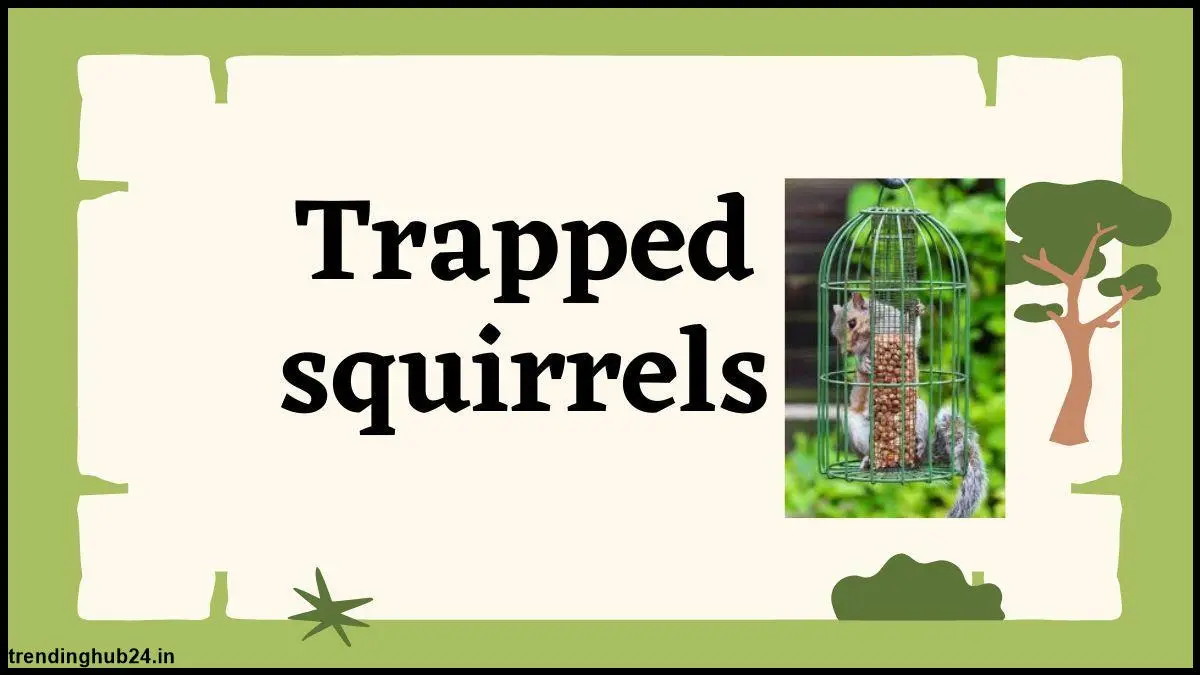🚀 Become a Verified Author on Trending Hub24
✍️ Author Account Available @ $60 / Month | +91 7355993756
Effective Ways to Rescue and Release Trapped Squirrels

Trapped squirrels often appear in unexpected places, such as attics, gutters. Most people panic or attempt to eliminate them in a nasty manner
Table of Contents
Trapped squirrels often appear in unexpected places, such as attics, gutters, or even under sheds. Most people panic or attempt to eliminate them in a nasty manner. But there are humane and safe means of rescuing these little creatures. Knowing how squirrels become trapped and what to do next, you are in better control, and both you and the animal will be safe.
First, Stay Calm and Think Ahead
When you notice that the squirrel is trapped, the first step is to be calm. Noise or movement will frighten the squirrel more. It will injure itself attempting to flee the trap. Back away and observe from a short distance, also check if the squirrel appears injured or weak.
If it is injured or weak, you may have to seek help from wildlife experts or animal control. But if it is healthy in appearance and can possibly fly away, then you can free it yourself.
Check Why the Squirrel Got Trapped
Squirrels get stuck most commonly in live traps, gutters, chimneys, or under a shed. They are searching for food, water, or shelter and get trapped. When you’re releasing a captured squirrel, make sure it’s not caught in wires or netting that will cause harm. Wear thick gloves and wire cutters, and let it out slowly without harming the animal.
If it is trapped inside a pipe or gutter, inspect the area thoroughly and look for its exact position. Squirrels may go crazy when trapped in a small space and can inflict damage. Clear everything on its path, such as leaves or trash and make an open pathway to provide it with an easy way out.
Use Safe Live Traps
If you need to catch a squirrel that keeps entering your residential areas, follow these safe and humane tips:
Use a live trap designed for small animals to catch the squirrel without harming it.
Check the trap frequently, at least every few hours, to avoid leaving the squirrel stressed or dehydrated.
Never keep the squirrel in the trap for too long, as this can cause extreme stress, starvation, or even death.
Place the trap directly on the ground in an area that squirrels frequently visit.
Bait the trap with foods like seeds, nuts, or small pieces of fruit to attract the squirrel.
Once the squirrel has been trapped, cover it with a piece of cloth softly to quiet it down.
Treat the trap gently without shaking it, because any jarring motion can hurt the squirrel.
Where To Release The Squirrel?
A common mistake that people make is releasing the squirrel too far from the area where they caught it. According to professionals, releasing a squirrel a couple of miles away lowers its survival rate. The released squirrel doesn’t have any idea where to live and where to hide, and also struggles a lot in searching for food. So release it at least 10-20 yards away from the building, but let it out near bushes and trees, ensuring a place for it to hide and recover.
If you trap the squirrel in an enclosure such as an attic or shed, first seal up where it got in. Fill gaps or holes using wire mesh, wood, or metal. This avoids a way for other squirrels to enter inside again.
Keep Yourself and the Squirrel Safe
Before handling the trapped squirrel, you need to consider your safety. Follow these steps:
Always wear thick gloves at all times to ensure your safety.
Squirrels may bite you when they are frightened, and their teeth are razor-sharp.
Do not attempt to touch or pet the squirrel, especially when it's hurt, or seems ill, lacks fur, or is moving abnormally.
If you notice something abnormal about the squirrel, don’t let it free, call a local wildlife specialist.
Do not use poison or adhesive traps, squirrels may get injured and die slowly, and they may also unintentionally harm other little animals.
When to Call For Assistance?
If you are unsure how to handle the situation, it’s best to contact your local animal control or a local wildlife rescue group. They have the equipment and the knowledge on how to safely remove trapped squirrels without harming them. They can also test whether the squirrel is injured or needs treatment before releasing it.
Professional assistance is also beneficial if the squirrel keeps returning. Wildlife professionals can determine the reason behind how and why the squirrel gets into your house and assist in sealing those openings.
To Sum up
Rescuing a stuck squirrel can be intimidating at first. But once you stay calm and follow the proper procedure, you can safeguard the animal and yourself. Take live traps with care, keep the release near where you trapped it, and seal entry points so it cannot return.
As a fellow being, considerate and humane, you can guarantee the squirrel’s safety and also prevent the generation of further issues. Trapped squirrels do not mean that you have to injure them or discard them. Simple measures are sufficient to help them find their way back to trees that they are naturally supposed to inhabit.
FAQs
1. What should I do first when I find a trapped squirrel?
Stay calm, keep pets away, and give the squirrel an escape route by opening windows to the outside.
2. Are live traps safe for squirrels?
Yes, live traps catch squirrels without hurting them. Always check traps often so the squirrel doesn’t stay trapped too long.
3. When should I call a wildlife removal service?
Call experts if the squirrel is hurt, sick, or stuck in a hard-to-reach spot where you can’t help safely.
